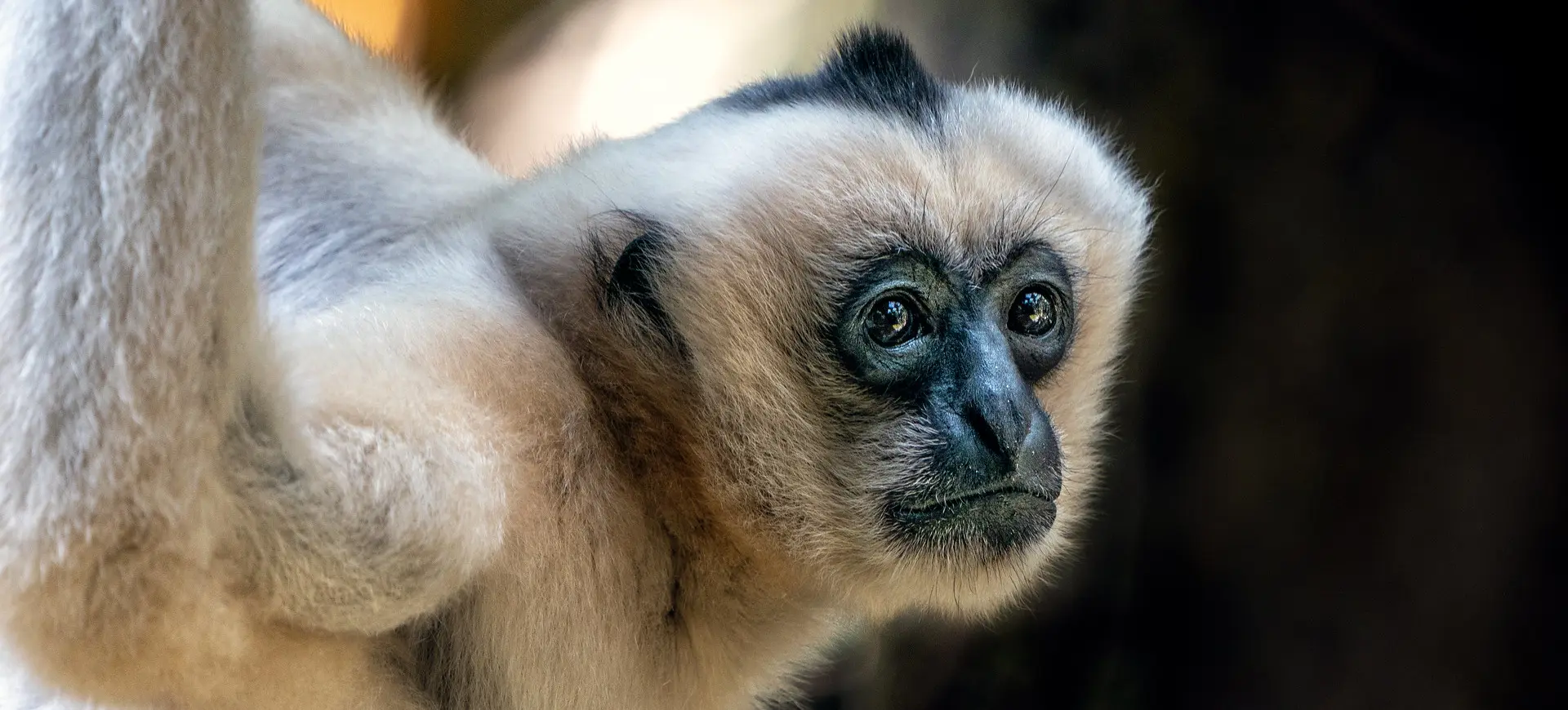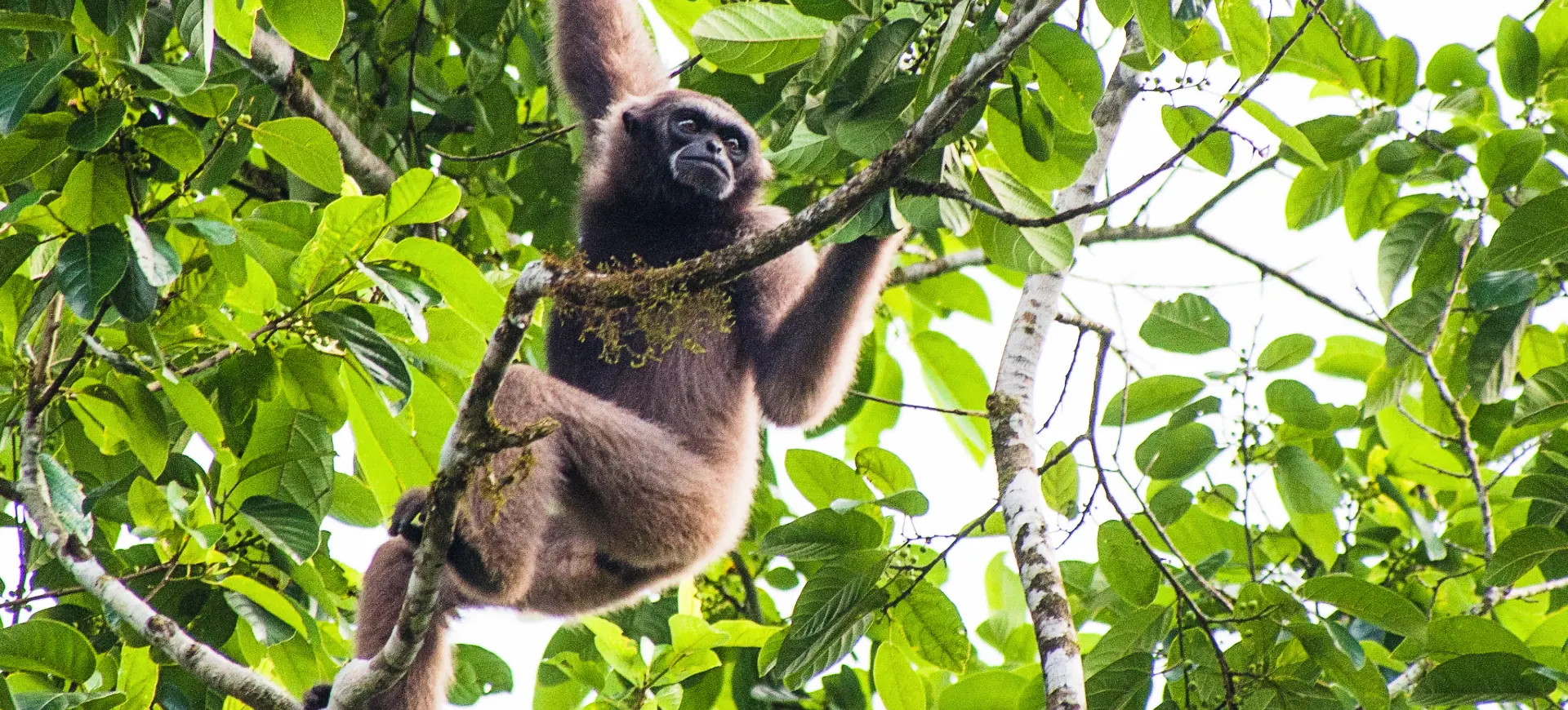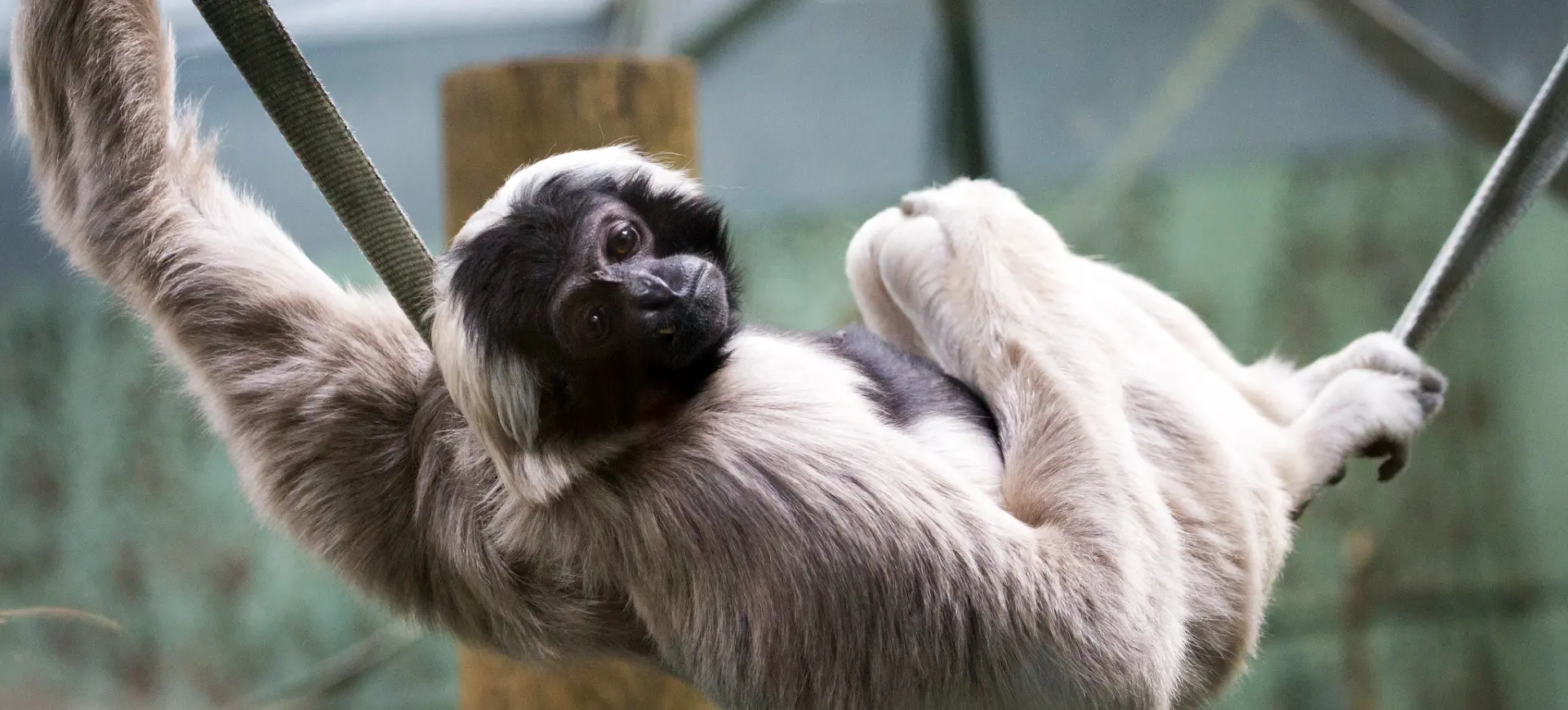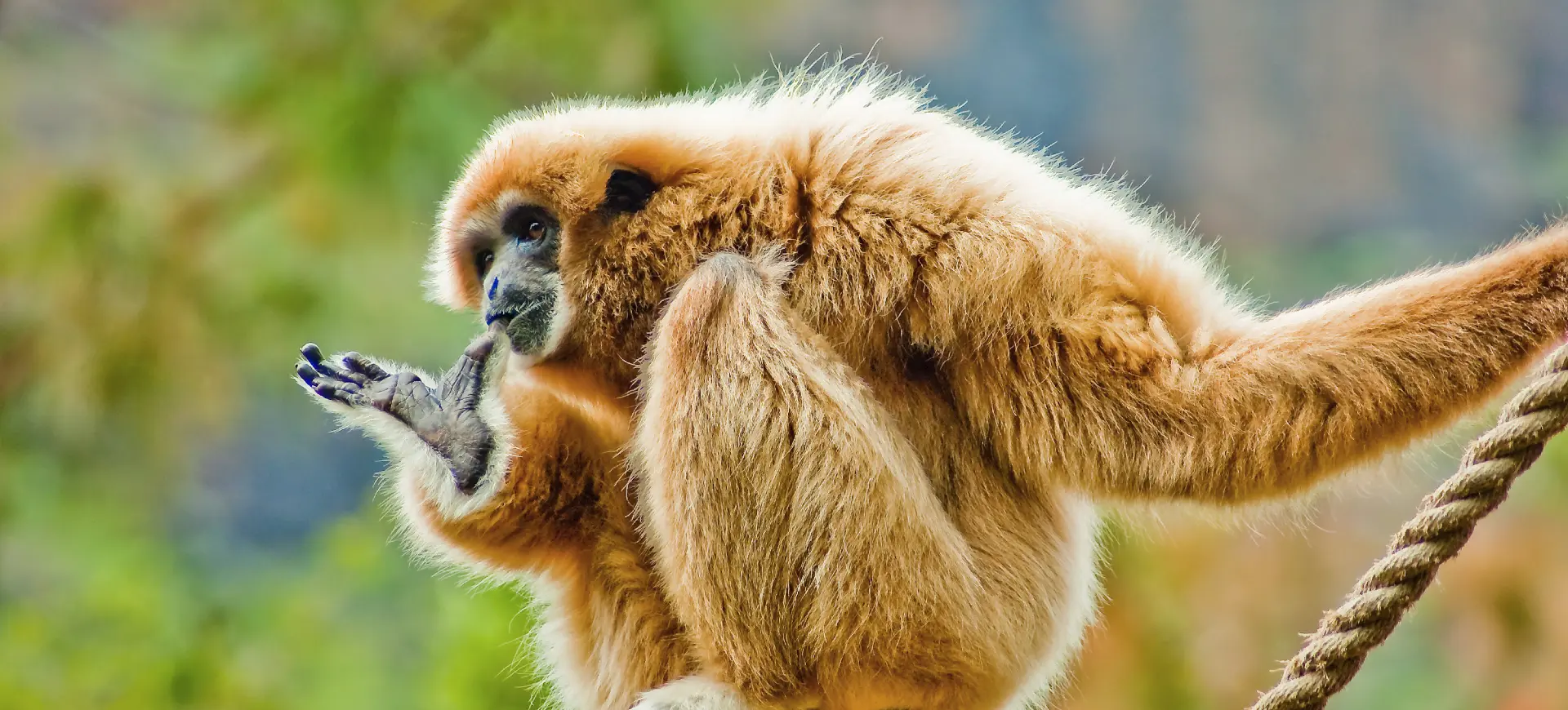Overview
The Siamang (Symphalangus syndactylus) is the largest of the gibbon species and is native to the forests of Indonesia, Malaysia, and Thailand. It is well-known for its loud, complex vocalizations, which include a distinctive “doo-wop” sound. Like all gibbons, the Siamang is an arboreal species, spending most of its time in the trees, and is recognized for its brachiating locomotion.
Siamangs are highly social animals, living in small, tight-knit family groups consisting of a monogamous pair and their offspring. They communicate using a combination of vocalizations, facial expressions, and body language. Despite their social nature, they are territorial and defend their home ranges vigorously against intruders.
Sadly, like many other primates, Siamangs are threatened due to habitat loss, mainly from deforestation for agriculture and illegal pet trade. The International Union for Conservation of Nature (IUCN) currently lists them as Endangered.
Taxonomy
Kingdom
Phylum
Class
Order
Family
Genus
Species
Type
Physical Description:
Siamangs are distinctive in size, fur color, and large throat sacs. They are larger than other gibbons, with both sexes similar in size. They are covered in dense, shaggy fur that ranges from dark to very light brown, often appearing black. The most distinguishing feature of a Siamang is the large, inflatable throat sac, which amplifies their calls and can be as large as a grapefruit when fully inflated.
These primates also have long arms, which are crucial for brachiation, their primary means of locomotion. Their second and third toes are partially joined by a membrane—hence the species name “syndactylus,” derived from the Greek words for “together” and “finger.”

Lifespan: Wild: ~25 years || Captivity: ~35 years

Weight: Male: 23-29 lbs (10.5-13 kg) || Female: 20-26 lbs (9-12 kg)

Length: Male: 29-35 inches (75-90 cm) || Female: 27-33 inches (70-85 cm)
Characteristic:
Native Habitat:
Siamangs inhabit Indonesia, Malaysia, and Thailand’s dense tropical and subtropical moist broadleaf forests. They particularly favor forests at higher altitudes, between 2,000 and 6,500 feet, and can be found in primary and secondary forests. They are highly arboreal, spending most of their time in the upper canopy, where they forage, socialize, and sleep.
Despite their adaptability to various forest types, they are affected by habitat loss due to deforestation for palm oil production, illegal logging, and human encroachment. These activities have resulted in fragmented Siamang populations and reduced the quality of their habitats.
Climate Zones:
Biomes:
WWF Biomes:
Biogeographical Realms:
Continents:
Diet:
Diet & Feeding Habits:
Siamangs are primarily frugivores, with fruit making up to 60% of their diet. They feed on a wide variety of fruits, especially figs. However, they consume leaves, flowers, insects, and occasionally bird eggs. Their long arms and hands aid in foraging in the high canopy, while their keen eyesight helps them spot food.
Despite the abundance of fruit in their habitat, they may face competition for food resources from other frugivores. Siamangs play a vital role in their ecosystems as seed dispersers, contributing to forest regeneration and diversity.
Mating Behavior:
Mating Description:
Siamangs form monogamous pair bonds, which is relatively rare among primates. Courtship involves grooming and a duet of vocalizations between the male and female. Mating can occur at any time of the year but is most common during the rainy season.
After a gestation period of about 7-8 months, the female gives birth to a single offspring. The young Siamang clings to its mother for the first few months of life, and the father takes an active role in its care after about six months. The offspring depend on their parents until they reach sexual maturity at around 6-8 years.
Reproduction Season:
Birth Type:
Pregnancy Duration:
Female Name:
Male Name:
Baby Name:
Social Structure Description:
Siamangs live in small, territorial family groups composed of a monogamous pair and their offspring. These groups defend their territory through loud, synchronized vocalizations that can be heard for up to 2 miles. These “songs” serve both to strengthen the pair’s bond and to warn off other Siamangs.
Territories are passed down through the female line, with young females inheriting a portion of their mother’s territory when they start their own family. Males leave their natal group when they reach maturity and must find an unoccupied territory or take over from another male.
Groups:
Conservation Status:
Population Trend:
The Siamang population in the wild is estimated at around 50,000 to 200,000 individuals. These populations are fragmented and found in reserves and protected areas in Indonesia, Malaysia, and Thailand. However, the actual numbers may be lower due to extensive habitat loss and fragmentation.
Hunting and trapping for the pet trade also pose significant threats to Siamangs. Despite being protected by law in all range countries, illegal trade still occurs, driven by demand for exotic pets and use in traditional medicine.
Population Threats:
Habitat loss due to deforestation for palm oil plantations, illegal logging, and human encroachment is the most significant threat to the Siamang population. Fragmentation of their habitat has led to isolated populations vulnerable to inbreeding and local extinctions.
In addition, Siamangs are hunted and trapped for the illegal wildlife trade. Despite legal protections, they are sought after as pets or used in traditional medicine. These threats and their slow reproductive rates make them especially susceptible to population decline.
Conservation Efforts:
Conservation efforts for Siamangs include legal protection in all range countries, with hunting and trade prohibited. They are also included in several protected areas, reserves, and national parks within their range. In-situ conservation programs focus on habitat preservation and anti-poaching measures.
Several ex-situ conservation programs are also in place, including captive breeding programs in zoos worldwide. Public education and awareness campaigns are crucial in reducing the demand for Siamangs as pets and promoting sustainable land-use practices in their habitats.
Additional Resources:
Fun Facts
- Siamangs are the largest and darkest species of gibbon.
- They possess a large, inflatable throat sac used to amplify their calls.
- Their calls can be heard up to 2 miles (3.2 km) away.
- Unlike many primates, Siamangs form monogamous pairs.
- The name “Siamang” comes from two Malay words, meaning “monkey” and “rending” or “tearing”.
- Siamangs are excellent brachiators, using their long arms to swing from branch to branch.
- Their second and third toes are partially fused, a feature that’s unique among primates.
- A Siamang family sings a morning “duet” to strengthen their bond and mark their territory.
- Siamangs play a significant role in their ecosystem by dispersing seeds.
- Despite their size, Siamangs have a diet that is primarily made up of fruit, especially figs.








